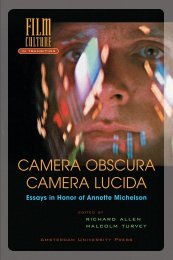Psychology - Forgot your username
Psychology - Forgot your username
Psychology - Forgot your username
You also want an ePaper? Increase the reach of your titles
YUMPU automatically turns print PDFs into web optimized ePapers that Google loves.
Appendix 1 How to reference<br />
<strong>your</strong> work<br />
It is standard academic practice to acknowledge the source of the ideas and<br />
information that you have used in writing <strong>your</strong> assignment. While it is expected<br />
that you will use the ideas, data and writings of others to support <strong>your</strong> own work,<br />
it is important that you acknowledge that they come from somewhere else, and<br />
the reference is designed to provide an accurate, detailed and stylized guide that<br />
should enable someone else to find the source.<br />
A citation and reference are required when you:<br />
• quote another person word for word, regardless of whether it is a phrase,<br />
sentence or paragraph<br />
• paraphrase, summarize, or refer to ideas or data from someone else<br />
• incorporate tables, figures or diagrams from another source.<br />
You should distinguish between a citation and a reference as follows.<br />
• Citations are used to refer to the source of a particular idea or piece of information<br />
in the text of <strong>your</strong> essay, and simply consist of the name of the author and<br />
the year of publication. If it is a verbatim quotation you should also give the<br />
page number.<br />
• References to all the authors mentioned in the text are then collected alphabetically<br />
at the end, giving full bibliographic details including title, author<br />
source, edition, page numbers, place of publication and publisher, according<br />
to a particular format prescribed by the reference system being used. Only<br />
references cited in the text should appear in the reference list.<br />
There are several referencing systems in common use, such as Harvard, the<br />
American Psychological Association (APA), Oxford, and the Museums and<br />
Libraries Association (MLA). Historically, and in arts subjects, it is common to<br />
have references as a footnote at the bottom of the relevant page, but now, particularly<br />
in science, the convention is to group them at the end, as described<br />
above. The system in most common use for psychology is the APA, as laid out in<br />
its Publications Manual (APA, 2001), which is used by the BPS as well. So we have<br />
used it in this book to familiarize you with it. However, you should find out what






